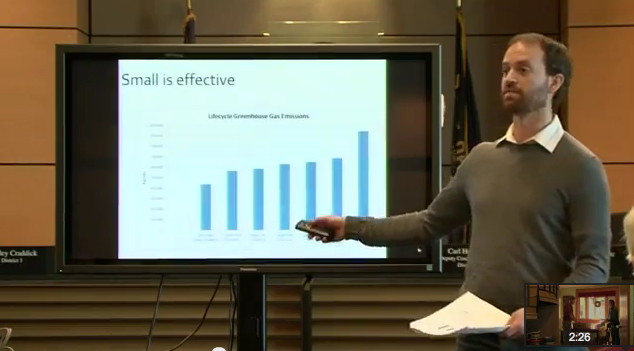 Yesterday I joined Eli Spevak, Martin Brown, and Jordan Palmeri for a workshop about appraising accessory dwelling units (ADUs). See the Accessory Dwellings website for lots more information about ADUs, including this post about appraising ADUs. I suppose I'm a bit of a nerd when it comes to housing, but I everyone there seemed to think it was really fascinating, so I was in good company. One of the things they talked about was how accessory dwellings often add value to a home because they create possibility (rental income, a space for live-in help or a young adult that's temporarily returned to the nest, or a parent deciding what the next step is after retirement). There are tons of spaces that are being rented out to singles and couples across the country.
Yesterday I joined Eli Spevak, Martin Brown, and Jordan Palmeri for a workshop about appraising accessory dwelling units (ADUs). See the Accessory Dwellings website for lots more information about ADUs, including this post about appraising ADUs. I suppose I'm a bit of a nerd when it comes to housing, but I everyone there seemed to think it was really fascinating, so I was in good company. One of the things they talked about was how accessory dwellings often add value to a home because they create possibility (rental income, a space for live-in help or a young adult that's temporarily returned to the nest, or a parent deciding what the next step is after retirement). There are tons of spaces that are being rented out to singles and couples across the country.
 The demand is high and it's a win-win situation for home owners and renters alike. But because so few of them are permitted most mortgage companies tell appraisers to completely ignore ADUs when figuring the value of the property. This makes it tricky, of course, for homeowners considering building an ADU to justify the expense. If it won't increase their property value it's hard to make it pencil out. So many people are building ADUs for the value they bring that's not monetary. The group of folks there would like to see ADUs getting some attention and recognition as a legitimate housing option. There are more single-person households in America than ever before so it would be great to have more housing options that are legal and permitted.
The demand is high and it's a win-win situation for home owners and renters alike. But because so few of them are permitted most mortgage companies tell appraisers to completely ignore ADUs when figuring the value of the property. This makes it tricky, of course, for homeowners considering building an ADU to justify the expense. If it won't increase their property value it's hard to make it pencil out. So many people are building ADUs for the value they bring that's not monetary. The group of folks there would like to see ADUs getting some attention and recognition as a legitimate housing option. There are more single-person households in America than ever before so it would be great to have more housing options that are legal and permitted.
Another interesting aspect discussed was Jordan's research which shows that of all the different things you can do to make a building more sustainable, building small is the most effective. Now I completely understand that most people like having a little more elbow room. (A few of my friends like a little more head room than my kitchen affords, too.) But I do think the research helps create the case for building the smallest spaces that meet our needs.
